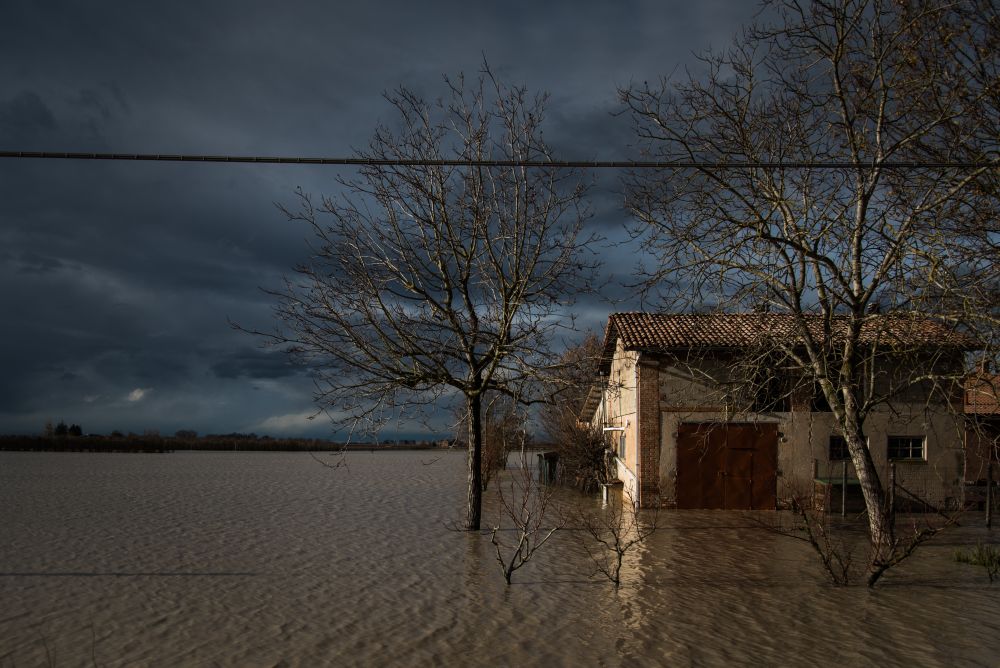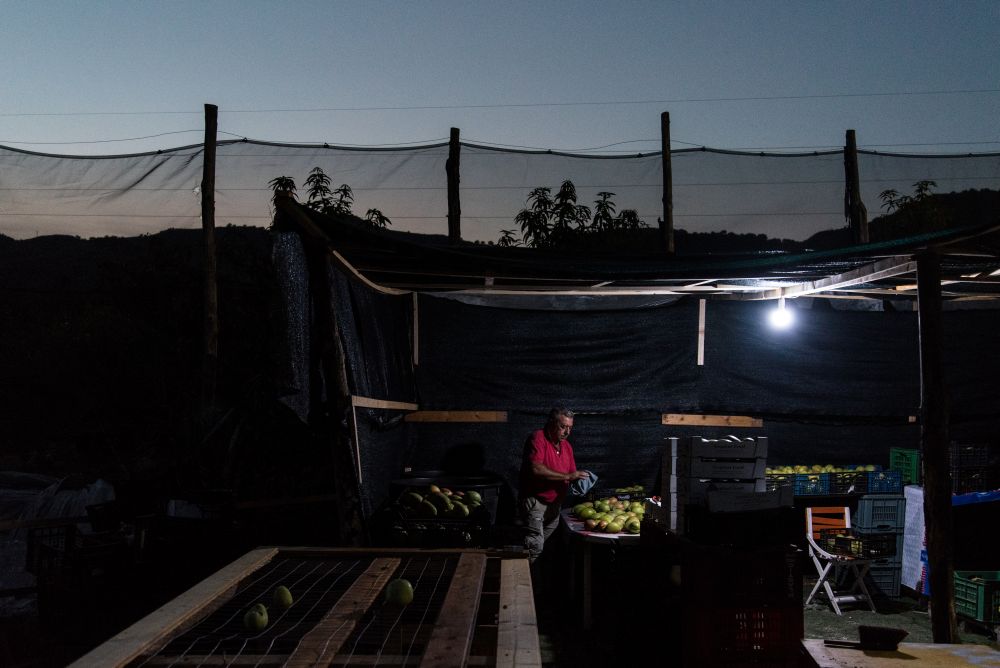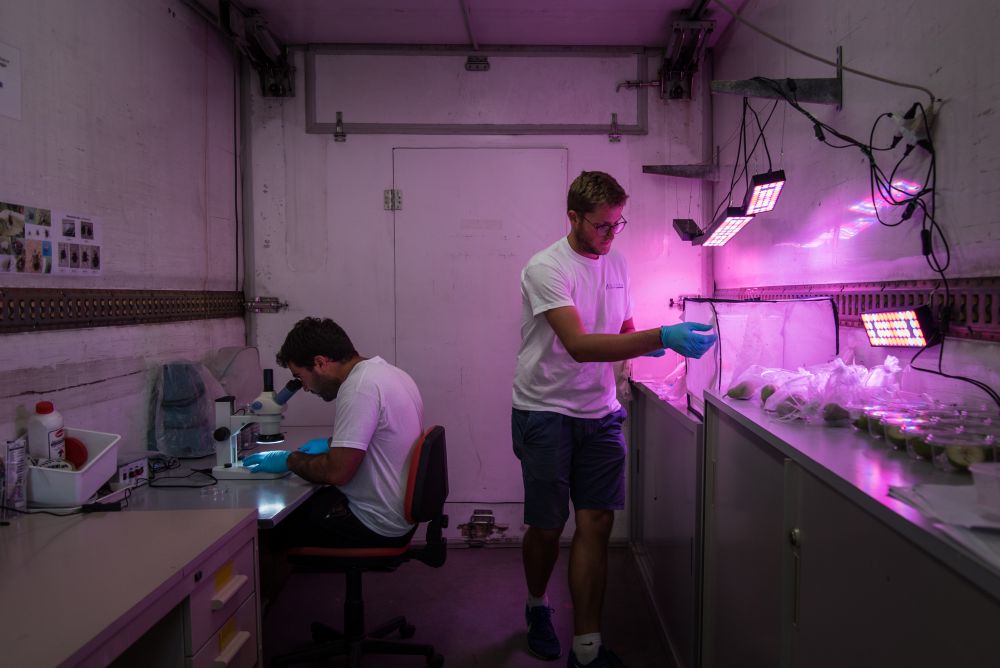Agriculture Turned Upside Down
Text and photos by Alessandro Gandolfi/Parallelozero
Abridged by Syharn Shen (沈思含)
Agriculture Turned Upside Down
Text and photos by Alessandro Gandolfi/Parallelozero
Abridged by Syharn Shen (沈思含)
Italy's agriculture is transforming due to climate change, with traditional crops migrating northward and tropical fruits flourishing in the south. This shift challenges conventional farming while sparking innovative adaptations in a warming world.

In the town of Nonantola in Modena Province, northern Italy, farmhouses and farmland are submerged after the Panaro River burst its banks following days of heavy rain.
Agriculture in Italy is transforming rapidly due to climate change, a trend affecting the entire Mediterranean region. Historical landscapes depicted in art, once showing forests and pastures, now feature vineyards, olive groves, and white nets for crop protection. This shift signals changes in agricultural production, with grapevines and olives moving northwards, and exotic fruits like avocados and mangoes thriving in the South. Increasing droughts necessitate irrigation systems, and legumes, which require less water, are growing in popularity. The European Environment Agency warns that Italy may lose significant farmland by the end of the century, with damages estimated between 58 and 120 billion euros.
Historically, agriculture has adapted to climate changes. Ancient texts like Marcus Terentius Varro's De Re Rustica describe how milder climates once allowed olives and grapes to flourish in previously colder areas. Today, a similar migration occurs with durum wheat moving north, increasing cultivation by 90%, while tomato production in the North has grown by 27%. In Poggiridenti, Sondrio, olive cultivation has surged from zero to 10,000 trees due to warmer climates. While the South still leads in olive cultivation, northern areas have increased their share by 12% over the last two decades. Vineyards are climbing higher altitudes, with predictions suggesting an 800-meter rise by the century's end.

In Calatabiano, Catania, southern Italy, Concetto Puglisi founded Tropical Fruit, a company specializing in mango production and sales. Climate change has increased the cultivation of tropical fruits like mangoes, avocados, papayas, and passion fruit in Italy, especially in eastern Sicily.
In southern Italy, rising temperatures and water shortages threaten traditional crops like lemons. Sicily, once famed for its lemons, saw production halve in 2023 due to drought, leading some farmers to switch to tropical fruits like bananas, papayas, and coffee. Rosolino Palazzolo plans to market Sicilian-grown coffee by 2026, while Concetto Puglisi's Tropical Fruit company specializes in mangoes. Despite being niche, tropical fruit production is growing, with Italian mangoes and avocados increasingly found in supermarkets. The rise in temperatures has also heightened security needs, as criminals target these valuable crops.
The average temperature in Italy was the second-highest in 44 years in 2023, with drought remaining a critical issue. Sicily declared a natural disaster in February 2024 due to lack of rainfall. Crops adapt by shifting altitude or latitude, altering growing seasons, or speeding up development. For example, Conserve Italia has turned to chickpea cultivation to combat water stress. In Tarquinia, one of Italy's driest areas, Paolo Tombini harvests chickpeas, a crop known for its resilience. Conserve Italia's effort has expanded chickpea cultivation to 3,000 hectares, reflecting a shift toward crops better suited to changing climates.

In Tolentino, Macerata, central Italy, Steven Idima from Nigeria and technician Simone Cioci collect wheat ears to maintain the purity of Khorasan wheat at Cermis, which conducts research to improve cereal species in response to climate change.
Legume consumption in Italy has surged, highlighting awareness of their environmental benefits. Italians consume 9.2 kilograms of legumes per capita annually, far exceeding figures in Spain and France. The shift towards plant-based diets is supported by companies like Barilla, which incorporates legume-based products and promotes crop rotation for sustainability. This aligns with goals for reduced water usage and greenhouse gas emissions compared to meat production.
Science and technology are pivotal in this agricultural shift. Institutions like Agency for Technological Experimentation and Agro-environmental Research (ASTRA) in Ravenna and the Research and Experimentation Centre for Crop Improvement (Cermis) in Tolentino develop crop varieties resistant to warming and diseases. Projects like Meteo Italian Supercomputing Portal (Mistral) in Bologna provide meteorological data to predict extreme weather events. Insurance companies are adapting, with Unipol launching the Adaptation in Agriculture (Life ADA) project to enhance agricultural resilience through preventive measures.

In Tebano, Ravenna, northern Italy, ASTRA studies Asian green shield bugs, which have proliferated due to climate change, causing over 600 million euros in damage to fruit crops in 2019. The lab tests environmentally friendly methods to combat them, including low-impact pesticides, antagonistic insects, and traps.
Historically, crises have spurred innovation. The Little Ice Age from the 14th to 19th centuries prompted significant societal changes in Europe, fostering new ideas and practices. As climate change presents similar challenges today, Italy is poised for transformation, with opportunities for innovation and adaptation in agriculture.
Contact Us | Plan a Visit | Donate
8 Lide Road, Beitou 11259, Taipei, Taiwan
886-2-2898-9999
005741@daaitv.com
©Tzu Chi Culture and Communication Foundation
All rights reserved.
